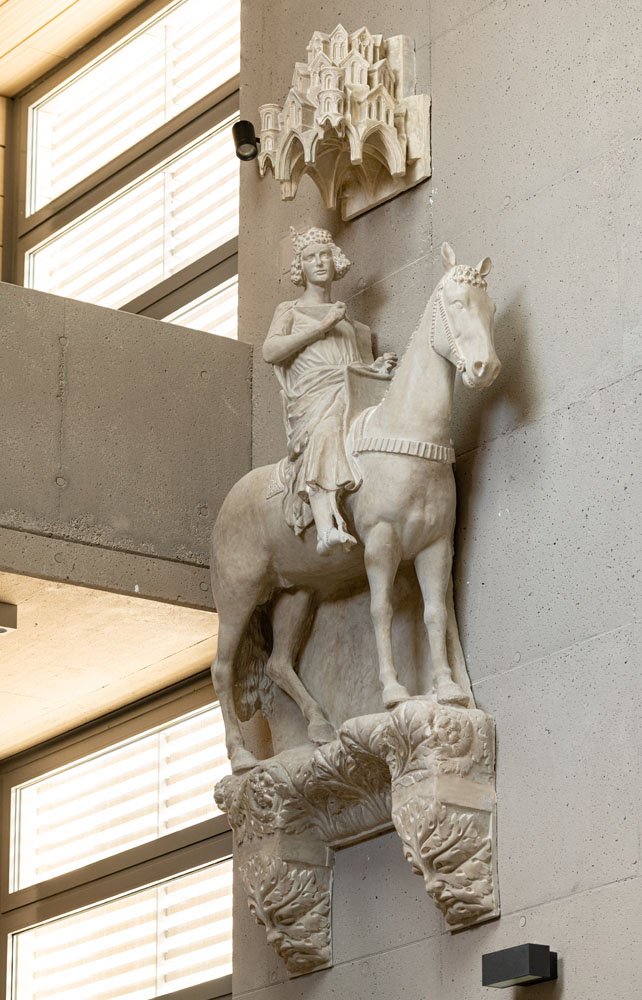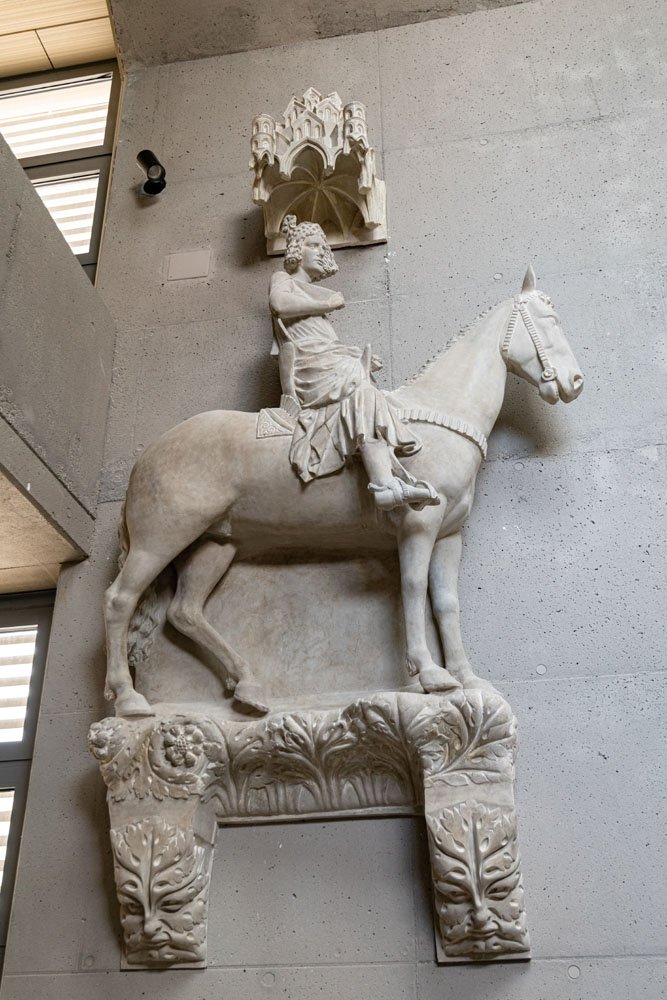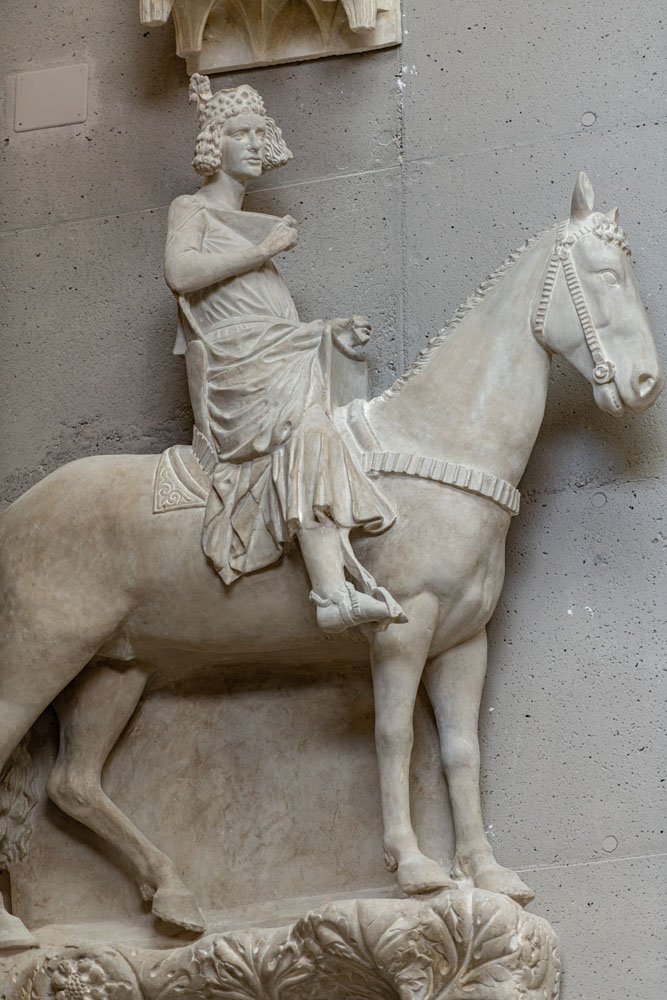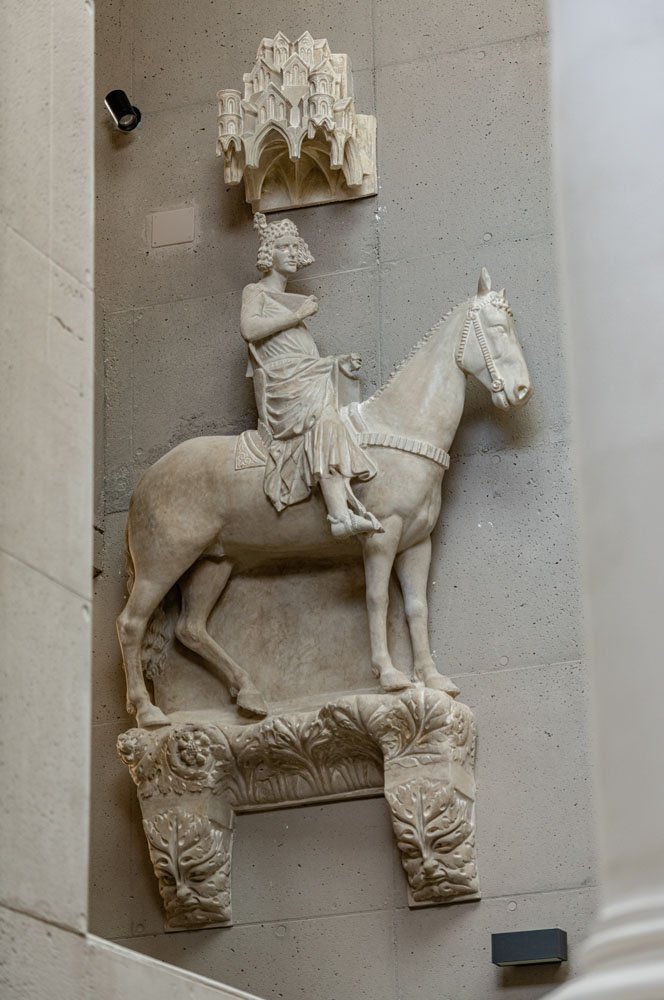Bamberg Horseman
German Sculptor, Casting Workshop of the Kaiser-Friedrich-Museum (cast maker)- Artist
-
German Sculptor
Casting Workshop of the Kaiser-Friedrich-Museum
(cast maker)
Berlin, first half of the 20th century
- Dated
- ca. 1235 (original), 1909 (cast)
- Classification
- sculpture, plaster cast
- Medium
- plaster cast
- Dimensions
- 440 × 295 × 60 cm
- Inv.no.
- Rg.9
- Department
- Sculptures - Plaster casts
- Current Location of the Original Artwork
- Germany, Bamberg, Cathedral
An enigmatic and much-disputed figure in the Bamberg Cathedral is the equestrian statue, standing with his back to the main doors on two consoles on a pillar in the nave. Having stopped his horse abruptly, he has fixed his gaze on the tomb of the imperial couple who founded the diocese. Over the centuries, several proposals have been made concerning the identity of the “Bamberg Horseman”, a magnificently designed and originally polychrome sculpture made of eight pieces of stone. One suggestion was Conrad III, whose tomb also lies in the cathedral. According to a more recent hypothesis, the statue portrays Stephen I of Hungary, whose wife was the sister of Henry II, Holy Roman emperor. This is supported by the fact that the statue was made during the tenure of Bishop Egbert of Bamberg (1203—1237), whose sister, Gertrude, was married to Andrew II of Hungary. Given the dynastic ties to Hungary, it is possible that the statue does indeed portray Saint Stephen, founder of the Kingdom of Hungary. Commissioned by the museum in 1909, cast at the Kaiser-Friedrich-Museum in Berlin (today Bode Museum). It was exhibited in the Romanesque Hall, in 1910.



